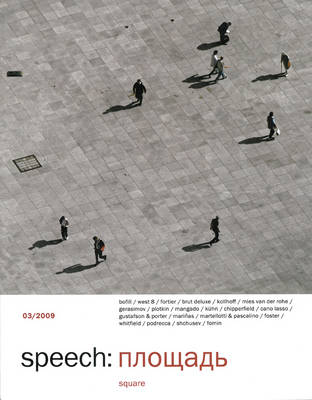This issue is devoted to city squares. As public spaces and elements forming the urban structure they can trace their history right back to Antiquity and became widespread in the Middle Ages. Over the course of many centuries squares played a highly important role not only in city life, but also in European culture as a whole. Their typology was constantly undergoing expansion and classification. Squares in front of palaces, cathedrals, churches, museums and theatres, market places, squares in front of railway stations or squares within city blocks in their various shapes and sizes are to be found in all historic cities great and small. Then there are the famous squares of European monarchies: Rome, Paris, London Madrid or Vienna - by turns both grandiose and intimate, these dramatisations on the theme of the city or ruler were depicted on engravings and paintings and spawned numerous imitations. The onset of the modern movement at the beginning of the 20th century interrupted this tradition. The 'rebirth' of squares in the 1930s-40s meant that they were even more soundly rejected in the post-war period.
Over the course of several decades, not only were no new squares created in most European countries, the old ones gradually fell into decline, retreating under the onslaught of the motor car - some of them were turned into road junctions, while many were simply used as car parks. Only in the late 1970s was there the start of a revival in the understanding of the value of the traditional historic city, with its bustling streets and chaotic or, on the contrary, carefully planned patchwork of densely built up and open spaces, back streets surrounded by tightly packed buildings and breathtaking vistas that open up unexpectedly. In this context there was also a revival of interest in squares as an indispensable part of the urban environment, as one of its most basic elements. In recent years the creation of new squares and regeneration of old ones has become common practice in many European cities. Sometimes this is born of a wish to correct the mistakes of the 20th century. But sometimes it is also the result of the Zeitgeist, not to mention a desire to bring about an aesthetic transformation of the urban environment and to make it a pleasanter place to be.
This requires not only vision and imagination, but also painstaking and labourintensive planning. Modern squares are the result of the combined efforts of specialists in urban and transport planners, architects and lighting and landscape designers. But despite the rational thought that goes into the creation of new squares, a subjective streak is very clearly evident in all this - the force of the effect produced by the space itself, the history and character of the locality, the impact made by the forms and materials. Architects who successfully design squares do more than just create a setting and give form and content to empty spaces - they are directors of the action played out in them and incorporate a myriad of different opportunities that make living in a city far more attractive and interesting.
- ISBN10 3869220139
- ISBN13 9783869220130
- Publish Date 30 August 2009
- Publish Status Out of Print
- Out of Print 23 September 2014
- Publish Country DE
- Imprint DOM Publishers
- Format Paperback
- Pages 252
- Language English
